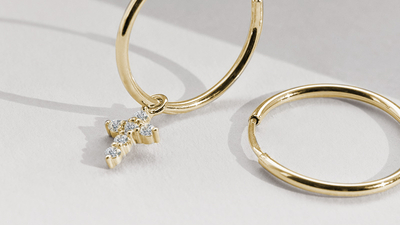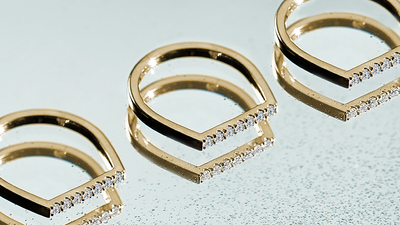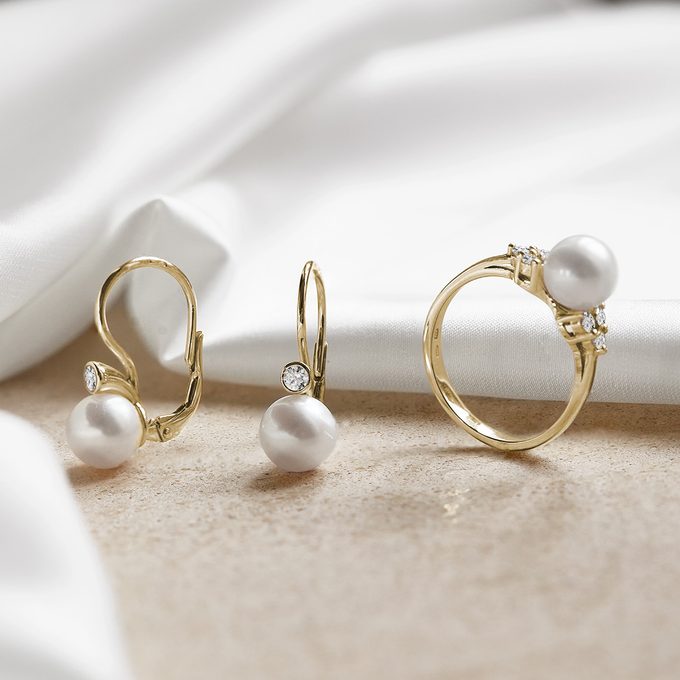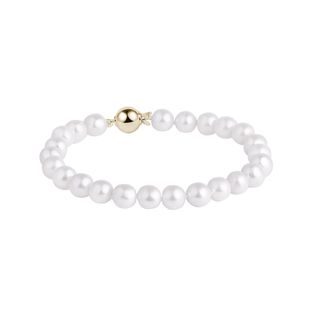Akoya pearls fulfill the general expectations people have of what a perfect pearl should look like. They are symmetrical, shiny and they enchant you with a whole spectrum of subtle shades of color that are simply irresistible. Today we'll take a closer look at their qualities and reveal what's behind their beauty.
The origins of Akoya pearls
Pearls have always been a highly sought-after item and they have enchanted many a ruler. Since ancient times, people have valued pearls highly and have guarded them as a family treasure that was passed down from generation to generation. In some places, they were also used as a form of payment or reward. In ancient Rome, wearing pearls was a privilege reserved only for the upper classes of society and the lower classes we not allowed to own them.
The huge demand for pearls was the impulse for exploring ways in which they might be artificially cultivated. In 1893, these efforts brought success and it was the Akoya pearl that became the first cultured pearl in history. This event is connected with Kokichi Mikimoto, the son of a Japanese noodle maker who invented the technology of introducing a foreign body into the interior of an oyster and who thus stood at the birth of the first pearl farms.
What makes Akoya pearls unique?
Whether Japanese, Chinese, or Australian, Akoya mollusks artificially produce smaller pearls than other marine mollusks. Cultivation begins when pearl divers known as Ama (who can dive to depths of up to 10 meters and hold their breath for up to 2 minutes) harvest these oysters from farms in the cold ocean waters around Japan. A bead from the shell of another mollusk is then carefully inserted into the oyster and the oyster is returned to the seabed. This piece becomes the nucleus of the pearl since the oyster that is irritated by this foreign object begins to coat it with nacre.
The cooler waters in that part of the world cause the pearl to grow more slowly, which makes it more compact and gives it much more luster. Compared to freshwater pearls, at first glance Akoya pearls have a higher quality nacre, are smoother, rounder and have a greater shine. Akoya pearls are also rarer. Only 5% of the pearls which are produced are of a sufficient quality required by the jewelry industry. They are, in short, pearls with a capital P, and their higher price corresponds to their exceptional quality.

THE SHAPE of the pearl is influenced by the shape of the nucleus which has been embedded into the pearl. In the vast majority of cases, this tends to be round (perfectly round pearls are the most popular), but other shapes can be used such as the teardrop shape or an oval. A special category of their own are keshi pearls, which are pearls without a nucleus.
THE SIZE of Akoya pearls average around 7 mm, but pearls as small as about 2 mm all the way up to a respectable 11 mm are also harvested. Of course, the price of the pearl increases with its size and the smoothness of the surface of a pearl as well as its luster also have a major influence on this.
THE COLOR of naturally occurring Akoya pearls covers a range from silvery white and creamy, to delicate shades of pink and gold, through elegant gray and blue. When buying pearl jewelry, you should always be advised as to whether or not the pearl has been artificially colored. The color of pearls is mainly influenced by the type of oyster it is from or more specifically, the color of its nacre. In addition to the basic color, you might see other color undertones on the pearl. These could be silver or pink on white pearls, golden tones on gold or cream-colored pearls, and gray or blue for gray-blue shades of pearls. However the blend of base color and undertone might also be much more subtle. Each pearl is quite simply an original.
HARDNESS: On the Mohs scale of hardness, Akoya pearls score 2.5 to 3, which ranks them alongside the softer minerals. If we were to compare them to minerals, they are slightly harder than halite, which is rock salt, and can be as hard as calcite.
Akoya pearl jewelry
Akoya pearls are seen as a symbol of purity and innocence. What fascinates us about them is their variety of colors and shapes and thanks to these, they can be used to create original jewelry, whether in a minimalist or romantic style.
Among pearl jewelry, the most typical are bracelets and shorter and longer necklaces which use pearls of very similar size and quality. Many a woman claim that these are a staple of a jewelry box. Peal bracelets and necklaces also go very well with gold rings or earrings decorated with Akoya pearls, which can be found in the KLENOTA range, in both classic and refreshingly modern designs. If you're looking for a versatile, timeless accessory, choose a bracelet or stud earrings.

Of course, you can also rely on pearls for special occasions. An example of a good investment is a KLENOTA pearl set made of Akoya pearls, which will be a fitting accessory for a woman at important business meetings, but also for a bride as she walks down the aisle. And even women who prefer a minimalist style won’t go without pearls. They will especially appreciate the design simplicity of stud earrings or a chain necklace decorated with pearls, which is a lighter version of the classic pearl necklace.
Akoya pearls suit any color of gold. They also shine in the presence of natural gemstones, ideally diamonds, which sparkle beautifully next to the pearls. These unusual, elegant earrings or this unmissable ring will convince you of that.
Akoya pearls will be a great choice if you are looking for inspiration for a beautiful and precious gift that will forever preserve the memory of the birth of a child, a wedding anniversary or even a successfully passed final exam. This is because Akoya pearls suit women of all generations. We are not exaggerating when we say that Akoya pearls are simply the basis of every woman's jewelry box.
How to take care of Akoya pearls
With proper care, Akoya pearls won’t lose their beauty. They may be more fragile when compared to harder minerals, but they will keep you happy for years if you follow a few rules. So how to properly care for pearls?
We recommend caution when wearing pearls. Perfume and hairspray are not good for them and it’s certainly not advisable to shower with them. Also be careful not to bring them into contact with sharp objects or corrosive substances. You may have heard of the rule "last on, first off" (that is, put them on last and take them off first). We subscribe to that rule without hesitation. You should also protect pearls from cosmetics, perfumes and other chemicals.
Another piece of advice is to wear them regularly. Because pearls love contact with the skin. It gives them the lubrication and grease they need to keep them shining beautifully. If for some reason you leave them in the box for a long time, you can restore their luster by applying a small amount of evening primrose oil to the pearls and by gently polishing them with it. After putting the pearls away, a gentle wipe with a damp cloth is also advisable. If they are a little more soiled, you can add a drop of regular dishwashing liquid to the water. Then let them dry on their own and store them away in the box.

Some interesting facts
- In the US, pearls are the traditional birthstone for the month of June, along with moonstone and alexandrite. They are also traditionally given on a third or thirtieth wedding anniversary.
- Finding the right pearls for a necklace or a set is quite an onerous job. This is because it’s important that the pearls on the one strand have the same qualities, not only in terms of size but also in terms of luster, color and reflection. Creating one necklace involves sorting through thousands of pearls. The deviation within a strand of pearls should be no more than 0.5 mm.
- The ancient Greeks had a beautiful custom of wearing pearls at weddings. They believed that pearls would bring happiness and love to the newlyweds as well as to everyone who wore them during the wedding ceremony. So no wedding was complete without some pearls.
- One interesting fact is that the oysters of the genus Pinctada, namely Pinctada fucata martensii and Pinctada imbricata fucata, which create the beautiful Akoya pearls, are the smallest commercially cultivated mollusk. They measure only around 2.5 to just over 3 inches. The name of the pearls is derived from the name of these oysters, which are called Akoya in Japan.
- Queen Elizabeth II is one of the most famous lovers of pearls. Akoya pearls have also been loved by other famous ladies such as Jacqueline Kennedy, Elizabeth Taylor and the enchanting Audrey Hepburn. And of course, Coco Chanel, who as a fashion icon was behind that pearl craze where every woman had to have a pearl necklace, otherwise without it her social life would be pointless.
- Today, Akoya pearls are the third most expensive commercially cultured pearls. No doubt you’re wondering which two surpass them. The top spot is held by South Sea pearls and the second spot belongs to Tahitian pearls. However Akoya pearls hold the top spot in the popularity rankings and we're guessing that they won’t be leaving that spot any time soon.
























